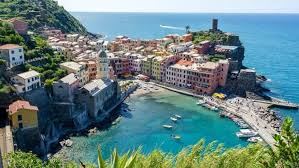Florence – best places in Italy to visit

Florence: Home to more UNESCO World Heritage Sites than in any other country, Italy is one of the most visited destinations in the world.
The celebration of life, the human spirit, and creative endeavors through art, writing, and deep thinking are part of the ethos in this nation, known as the birthplace of the Renaissance.
Travel here and you’ll see some of the best art and fashion while filling your brain with rich history and expanding your belly with pasta and gelato. The indelible cityscapes will be imagery imprinted in your mind for a long time to come.
Florence, the capital of Italy’s Tuscany region, tops the list of best places in Italy to visit. Even though the population is over 383,000 residents, Florence has a small town feel, with its meandering cobblestone streets, tiny boutiques and eateries, and shop vendors that make eye contact and say ciao. Of course, there are some well-visited must-see places that you shouldn’t miss on a tour of Florence, however, I’ve included inimitable less-touristy sojourns as well.
Florence is home to the world’s oldest pharmacy, yet many travelers have never heard about it before. The Officina Profumo Farmaceutica di Santa Maria Novella has a long history, one that includes Monks making therapies for Black Death. Today, this perfume mecca for all-things-lovely has stores in 75 different locations across the globe but they rely on word-of-mouth advertising only.
The outside of the pharmacy is unobtrusive and easy to walk by and miss—you’ll see the rock awning and possibly a few motorbikes at the entrance. Once inside, however, your jaw will drop as you make your way through the Sales Hall, where women stand on platforms ready to assist you; the Green Room, which overlooks a garden and is full of priceless artworks; and the Ancient Apothecary’s Shop, with vaulted ceilings and rows of vials and jars full of herbal products and potions.
Make time to take a guided tour of the on-site museum and experience the celebrated tea service. The Gallerie degli Uffizi, located near the Piazza della Signoria in the historic center of Florence, is where you’ll stand in wonder while viewing Sandro Botticelli’s “The Birth of Venus”, Michelangelo Merisi da Caravaggio’s “Medusa”, Piero della Francesca’s “Portraits of the Duke and Duchess of Urbino”, and Artemisia Gentileschi’s “Judith and Holofernes”. Make sure you give yourself ample time to walk through the museum’s many galleries and map out a game plan of the most important works of art that you want to be sure to see to make the best use of your time and energy.
It’s not hard to find good gelato in Florence—gelaterias are everywhere. And, since this sweet treat is said to have been invented in Renaissance Florence, you must try a scoop or two or three while visiting. Grab a cone or cup near Ponte Vecchio and indulge in two iconic Florentine experiences at once. Choose a flavor from one of these categories, popular in Tuscany: chocolates, creams, fruits, nuts or novelty.
Then, make your way to the stone Old Bridge, Ponte Vecchio, the only arched bridge stretching across the Arno that wasn’t destroyed during World War II. This bridge is one of the best places to snap a photo, enjoy a gelato, people (and pet) watch, and shop. In the 13th century, butchers and fishmongers had a home on the bridge, followed by goldsmiths and jewelers. Today, you can find a wide variety of boutiques and souvenir shops, yet the jewelers still remain.
The Ponte Santa Trinita and the Ponte alle Grazie are neighboring bridges that are also quite beautiful and worth strolling over.
Near Ponte Vecchio, in Mercato Nuovo, sits Porcellino, a bronze sculpture that ensures good luck by putting a coin in the boar’s mouth, and letting the money fall into the water-filled grate below. If the coin bounces out, you won’t be awarded a favorable fortune. Be sure to rub the snout afterward to safeguard a return visit to Florence.
Florence Cathedral, formerly called Santa Maria del Fiore, was designed by Arnolfo di Cambio and is considered one of the most stunning basilicas in all of the world. Dedicated to the Virgin of the Flower in 1412, this holy place is the third largest, after St. Peter’s in Rome and St. Paul’s in London.
Stroll along the exterior of this UNESCO World Heritage Site and you’ll notice the colorful marble sections that weave in green and pink hues with bright white borders as well as the impressive Filippo Brunelleschi’s terracotta-tiled dome. The Piazza del Duomo includes the Baptistery and the bell tower, Giotto’s Campanile.
Most people have heard of Michelangelo’s “David”, the most recognizable work of Renaissance sculpture. This colossal 12,000-pound sculpture was carved out of a single block of white marble and stands at 17 feet tall. Visit the Galleria dell’ Accademia di Firenze, home to “David” since 1873.
If you visit Piazza della Signoria, where the famous Fountain of Neptune is situated, you can see a replica of the “David” in the open-air while also enjoying time in the square, perusing goods in rows of outdoor shops, eating, and watching the world go by.





